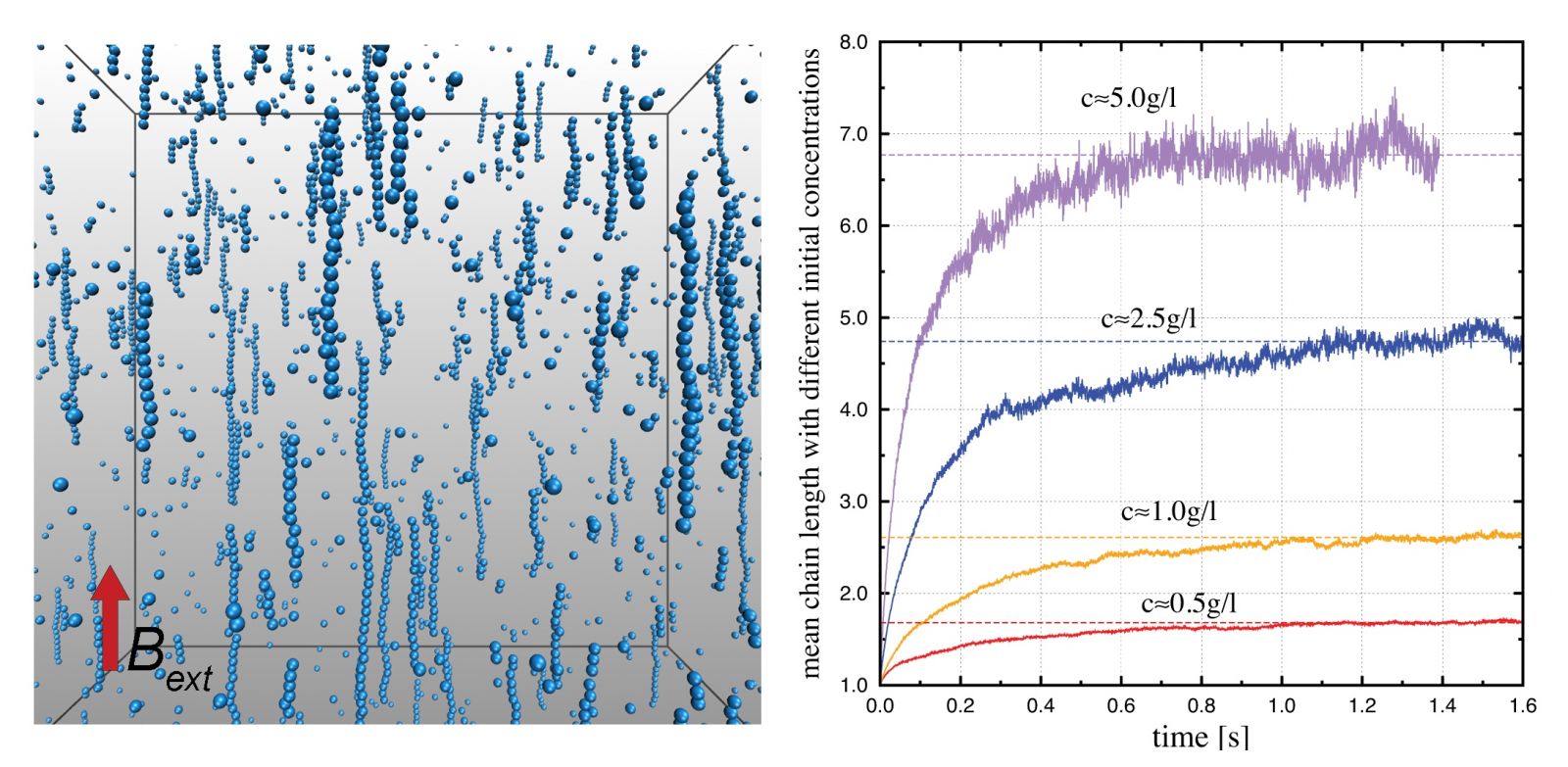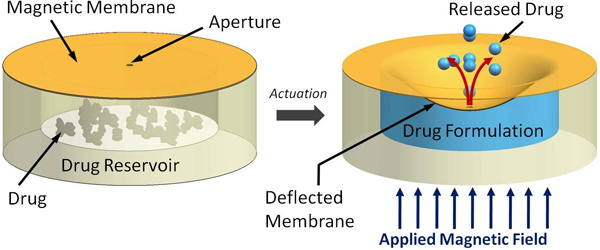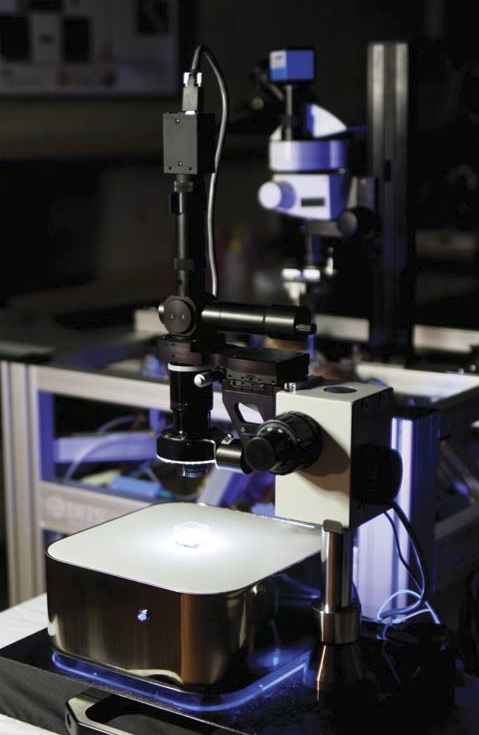
Prediction of a New Equilibrium State for the Aggregation of Superparamagnetic Colloids Under High Fields
September 19, 2011It is known that dispersions of superparamagnetic nanoparticles tend to arrange in chain-like structures under high external and uniaxial magnetic fields. According to previous experiments and computer simulations, these chain-like structures are expected to grow with time following a power law behavior.
New Langevin Dynamics simulations and thermodynamical arguments in a recent paper by Adnreu et al has show that, in some conditions, these dispersions of aggregates attain an equilibrium state after a transient period of chain formation. This novel state can be explained in the basis of a balance between energetic and entropic effects on the chain formation process. The properties of this equilibrium state can be described by the magnetic content of the superparamagnetic particles, their size and the initial concentration of particles. At the time of publication of these theoretical results, there was no clear experimental evidence for such an equilibrium state under high magnetic fields. However, a few months later, Barrett et al published new results on magnetic aggregation employing Small Angle Neutron Scattering (SANS), which supports the existence of this equilibrium state.

Researchers Invent New Drug Delivery Device to Treat Diabetes-Related Vision Loss
September 16, 2011Diabetic retinopathy is a complication of diabetes mellitus that can eventually lead to blindness.
At the University of British Columbia, researchers in the Faculty of Pharmacuetical Science and the Department of Mechanical Engineering have developed a novel device that will make drug treatment for diabetic retinopathy safer and more effective. The device, no larger than the head of a pin, consists of a sealed reservoir made of flexible polydimethylsiloxane that is implanted behind the eye. Part of the reservoir’s flexible membrane is magnetic; an electric field applied to the device causes the magnetic membrane to deform and release a controlled amount of drug out of a small hole. An advantage of this device is that it requires no batteries or electricity. Early lab tests using the drug doxetaxel have shown that the device can consistently deliver a suitable dosage without breaking or leaking after 35 days and maintain pharmacological activity of the docetaxel for over 2 months.
Click HERE to read the full paper.

11th German Ferrofluid Workshop
September 15, 2011
 The Workshop is devoted to the most recent development in ferrofluid research. This covers all classical areas of ferrofluid research as physico-chemistry, microstructure, numerical simulations, ferrohydrodynamics, heat and mass transfer, engineering and biomedical applications etc. Moreover, magnetorheological fluids and composites are traditionally among the topics of the workshop.
The Workshop is devoted to the most recent development in ferrofluid research. This covers all classical areas of ferrofluid research as physico-chemistry, microstructure, numerical simulations, ferrohydrodynamics, heat and mass transfer, engineering and biomedical applications etc. Moreover, magnetorheological fluids and composites are traditionally among the topics of the workshop.
September 28-30, 2011, Benediktbeuern, Germany
http://www.mfd.mw.tu-dresden.de/ffworkshop/
Magnetic Nanoparticles: From Fabrication to Clinical Applications
September 15, 2011Now available for pre-ordering from CRC Press or Amazon.

Offering the latest information in magnetic nanoparticle (MNP) research, this comprehensive volume reveals the in-depth knowledge behind this highly important and emerging area of nanotechnology. It covers the synthesis and characterization of MNPs, the biofunctionalization of MNPs, and the biomedical and clinical applications of this technology including using MNPs in diagnostic MRIs, gene delivery, and the treatment of cancers. Balancing clinical applications with the underlying theory and foundational science behind these new discoveries, this book stimulates those entering the field as well as practicing engineers toward new research and further groundbreaking developments.
The book will be release January 25, 2012
Magnetic Particle Imaging Workshop (IWMPI2012)
September 15, 2011
 The workshop aims to cover the status and recent developments of both the instrumentation and the tracer material in performing magnetic particle imaging. Furthermore, the workshop aims at presenting first results from phantom and pre-clinical studies. There will also be an opportunity to present research findings and results to a highly interested audience of professionals and academic experts active in the field.
The workshop aims to cover the status and recent developments of both the instrumentation and the tracer material in performing magnetic particle imaging. Furthermore, the workshop aims at presenting first results from phantom and pre-clinical studies. There will also be an opportunity to present research findings and results to a highly interested audience of professionals and academic experts active in the field.Submission of Abstracts: October 4, 2011
March 15-16, 2012, Lübeck, Germany
Electronic Manipulator with 5 Degrees of Freedom
September 15, 2011
Aeon Scientific manufactures micromanipulati on systems capable of 5 degree-of-freedom wireless magnetic control of an unthethered agent within a spherical workspace of 10mm diameter.
on systems capable of 5 degree-of-freedom wireless magnetic control of an unthethered agent within a spherical workspace of 10mm diameter.
Aeon Scientific is interested in finding a distributor; for information, please contact Dominik Bell by email.
Magnetics Business and Technology Magazine
September 14, 2011Magnetics is a trade journal for technical professionals who integrate or utilize magnetic technologies in their products and applications, and for technical and management professionals in the magnetics industry.. The magazine is published quarterly in the spring, summer, fall and winter.
The summer edition has been released and is available in a searchable digital format

Single-Molecule Magnets Evolve
March 29, 2011An unusually unsymmetrical organometallic complex made up of an erbium atom sandwiched between two different aromatic hydrocarbon rings exhibits unique magnetic behavior, a new study shows. This complex could become a prototype for further development of single-molecule magnets (SMMs), which are being sought for applications such as high-density information storage and quantum computing.
 Conventional magnets rely on the collective behavior of the unpaired electron spins of millions of individual metal atoms in a bulk material. SMMs, on the other hand, individually exhibit magnetlike behavior. A magnetic device made with these complexes, each storing a bit of data, could hold thousands of times more information than current storage devices.
Conventional magnets rely on the collective behavior of the unpaired electron spins of millions of individual metal atoms in a bulk material. SMMs, on the other hand, individually exhibit magnetlike behavior. A magnetic device made with these complexes, each storing a bit of data, could hold thousands of times more information than current storage devices.
Most SMMs are based on cluster compounds with multiple metal-ion cores such as Mn12O12, but only about 10 examples of single-metal-ion SMMs are known. A research team led by Song Gao and Bing-Wu Wang of Peking University, in China, has synthesized and studied the magnetic properties of a new type: an erbium cyclooctatriene pentamethylcyclopentadiene complex (J. Am. Chem. Soc., DOI: 10.1021/ja200198v).
For more information, check out our Archives.
September 2017

Search this site with the power of
